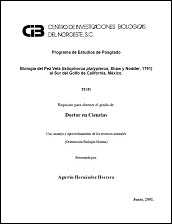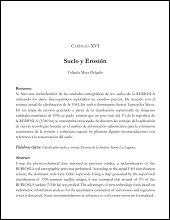Interaction between mercury (Hg), arsenic (As) and selenium (Se) affects the activity of glutathione S-transferase in breast milk; possible relationship with fish and shellfish intake
EFECTO DE LA INTERACCIÓN ENTRE MERCURIO (Hg), ARSÉNICO (As) Y SELENIO (Se) EN LA ACTIVIDAD DE GLUTATIÓN S-TRANSFERASA EN LECHE MATERNA; POTENCIAL RELACIÓN CON EL CONSUMO DE PESCADOS Y MARISCOS
Autor
RAMON GAXIOLA ROBLES
VANESSA LABRADA MARTAGON
ALFREDO DE JESUS CELIS DE LA ROSA
BAUDILIO ACOSTA VARGAS
LIA CELINA MENDEZ RODRIGUEZ
TANIA ZENTENO SAVIN
Metadatos
Mostrar el registro completo del ítemResumen
"Breast milk is regarded as an ideal source of nutrients for the growth and development of neonates, but it can also be a potential source of pollutants. Mothers can be exposed to different contaminants as a result of their lifestyle and environmental pollution. Mercury (Hg) and arsenic (As) could adversely affect the development of fetal and neonatal nervous system. Some fish and shellfish are rich in selenium (Se), an essential trace element that forms part of several enzymes related to the detoxification process, including glutathione S-transferase (GST). The goal of this study was to determine the interaction between Hg, As and Se and analyze its effect on the activity of GST in breast milk. Milk samples were collected from women between day 7 and 10 postpartum. The GST activity was determined spectrophotometrically; total Hg, As and Se concentrations were measured by atomic absorption spectrometry. To explain the possible association of Hg, As and Se concentrations with GST activity in breast milk, generalized linear models were constructed. The model explained 44% of the GST activity measured in breast milk. The GLM suggests that GST activity was positively correlated with Hg, As and Se concentrations. The activity of the enzyme was also explained by the frequency of consumption of marine fish and shellfish in the diet of the breastfeeding women." "La leche materna es considerada como una fuente ideal de nutrientes para el crecimiento y el desarrollo de los recién nacidos, pero también puede ser una fuente potencial de contaminantes. Las madres pueden estar expuestas a diversos contaminantes como resultado de su estilo de vida y de la contaminación ambiental. Mercurio (Hg) y arsénico (As) pueden afectar negativamente el desarrollo del sistema nervioso fetal y neonatal. Algunos peces y mariscos son ricos en selenio (Se), un oligoelemento esencial que forma parte de diversas enzimas relacionadas con el proceso de desintoxicación, incluyendo glutatión S-transferasa (GST). El objetivo de este estudio fue determinar la interacción entre Hg, As y Se, así como analizar su efecto sobre la actividad de GST en la leche materna. Muestras de leche materna fueron obtenidas entre los días 7 y 10 después del parto. La actividad de la GST fue determinada espectrofotométricamente. Las concentraciones totales de Hg, As y Se fueron medidas por espectrometría de absorción atómica. Para explicar la posible asociación de las concentraciones de Hg, As y Se con la actividad de la GST en la leche materna, se construyeron modelos lineales generalizados. El modelo explicó el 44% de la actividad de GST medida en leche materna. El MLG sugiere que la actividad de GST se correlacionó positivamente con las concentraciones de Hg, As y Se. La actividad de la enzima se explica también por la frecuencia de consumo de peces marinos y mariscos en la dieta de las mujeres que se encuentran en periodo de lactancia."
Colecciones
Ítems relacionados
Mostrando ítems relacionados por Título, autor o materia.
-
PROMOCIÓN DEL PERIFITON PARA EL CULTIVO DE CAMARÓN BLANCO: HACIA UNA ACUICULTURA ECOLÓGICA
DOMENICO VOLTOLINA LOBINA; JUAN MANUEL AUDELO NARANJO; MARIA DEL ROSARIO PACHECO MARGES -
Suelo y Erosión
YOLANDA LOURDES MAYA DELGADO


